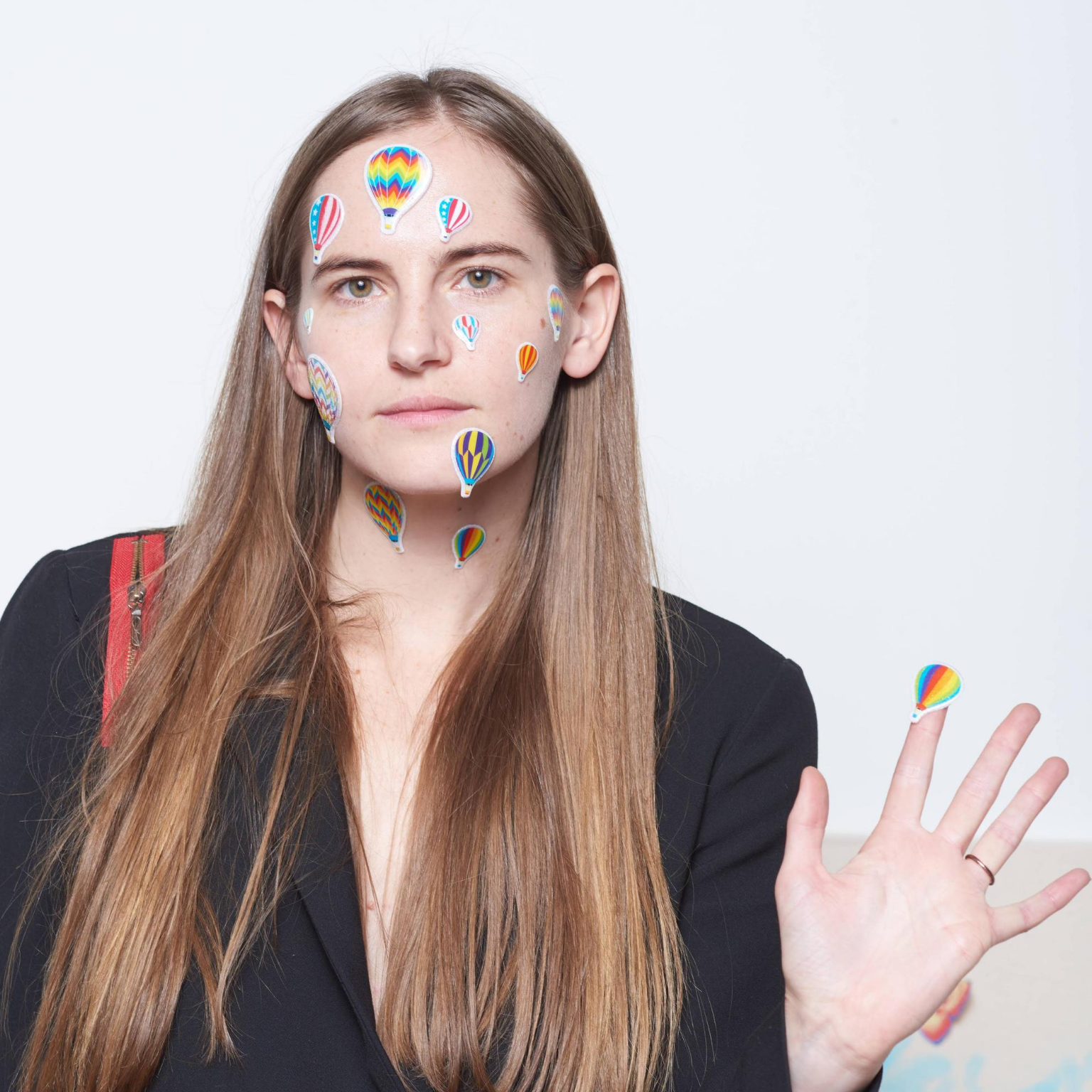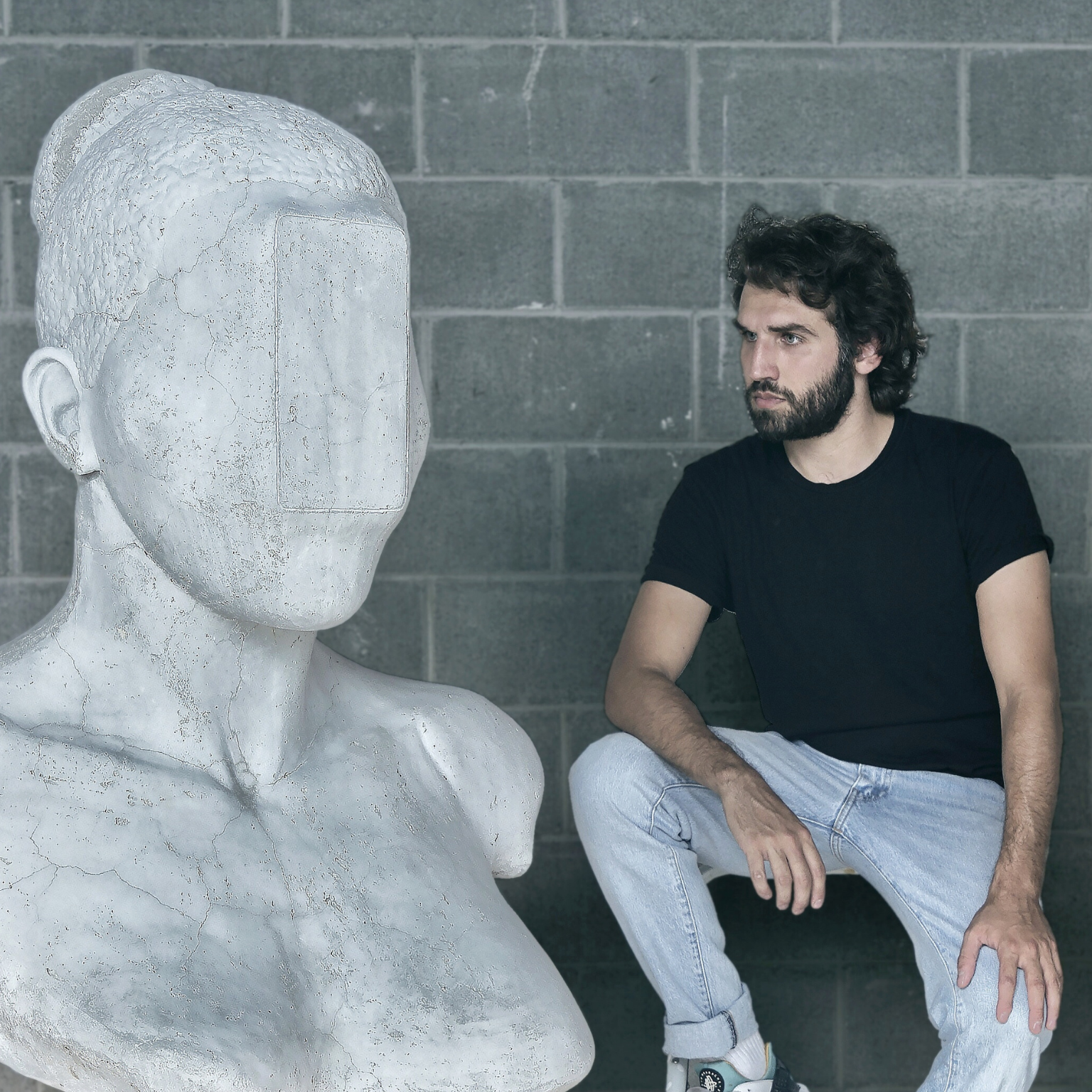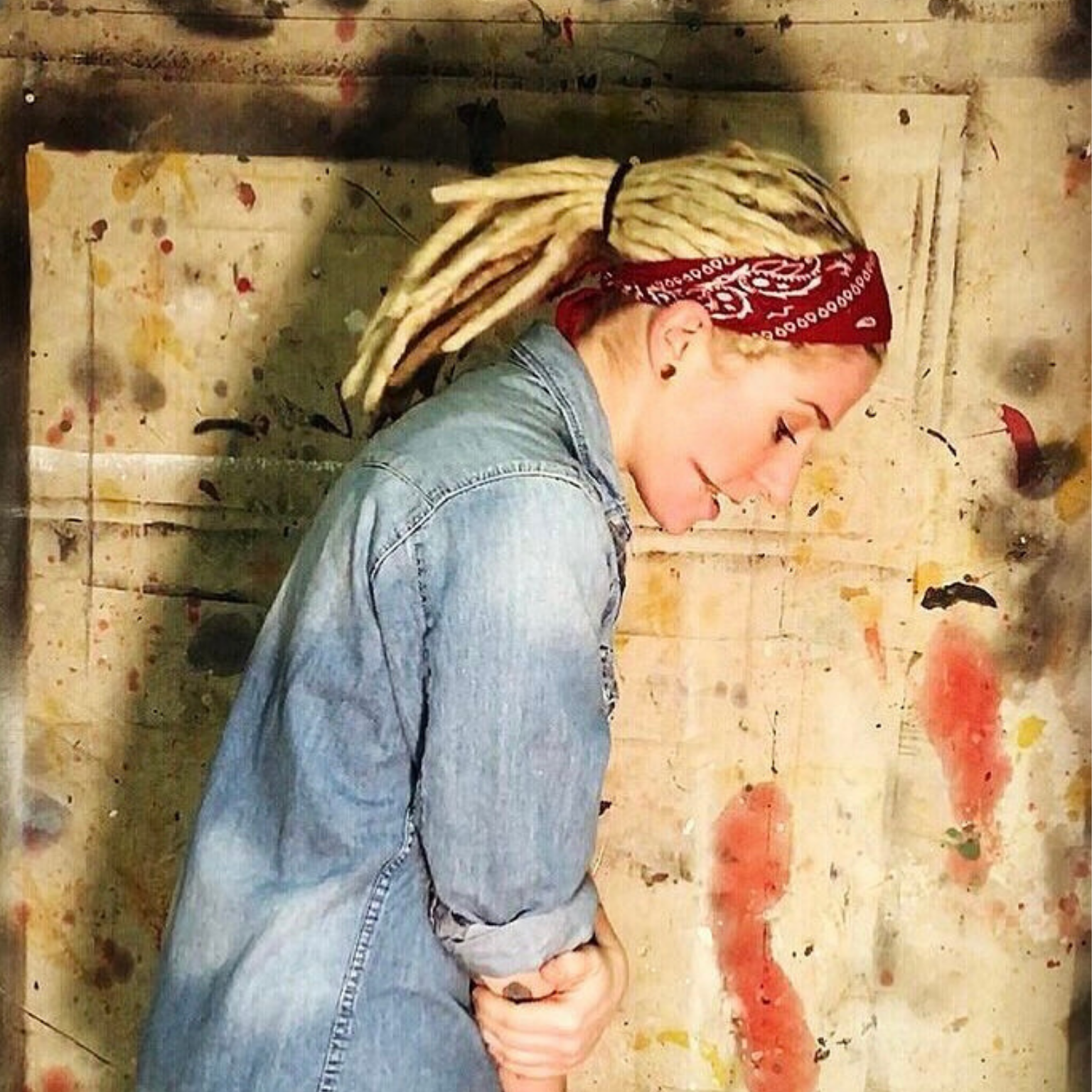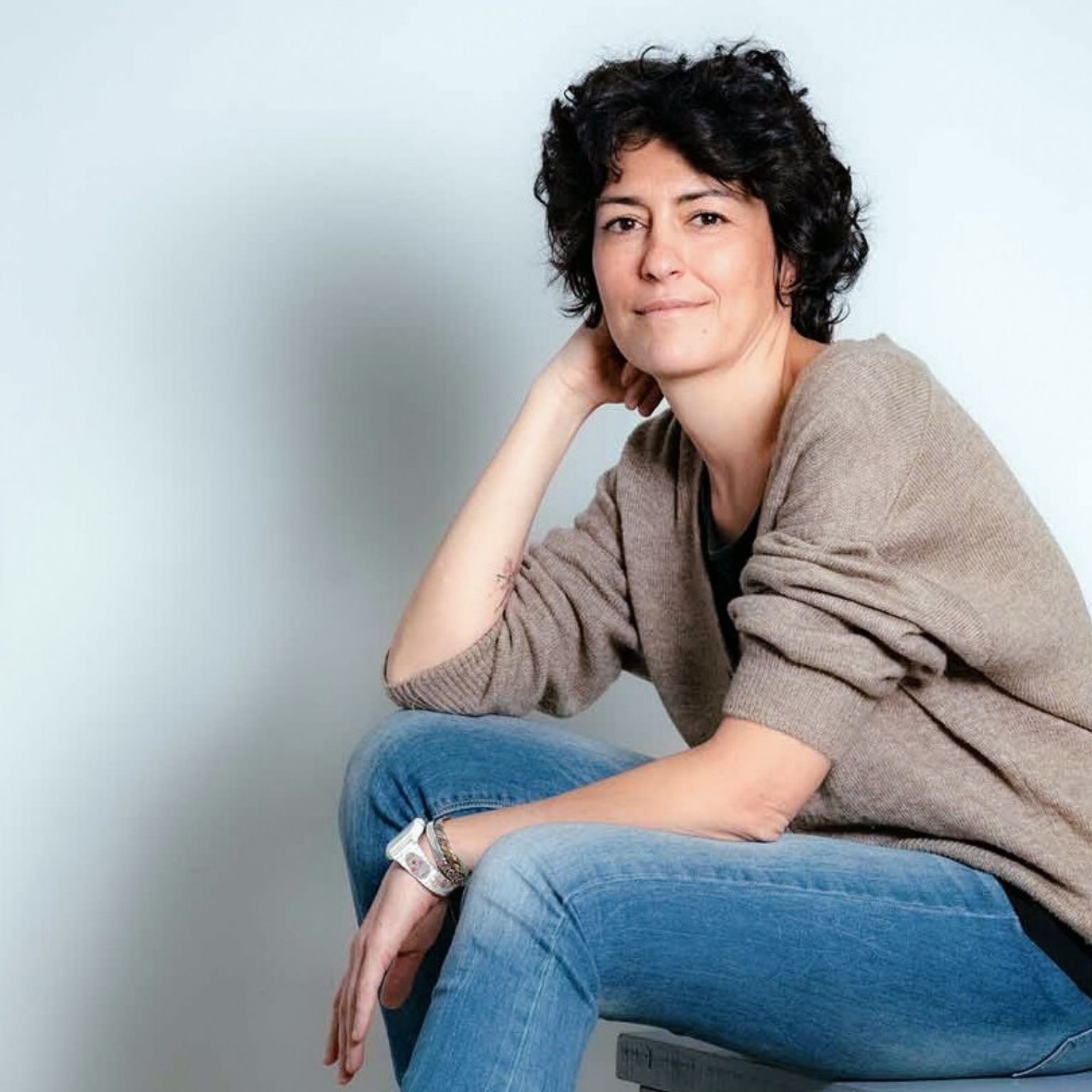Gretchen Andrew, search engine artist and Internet imperialist from Los Angeles. Photography © Nick Berardi
1.In your opinion what is the role of a museum?
As I approach my first museum exhibition I have been thinking a lot about this. There are two important quotes I love on this:
“A genuine public space is a place where every citizen is welcome to be present, and where the purely private is excluded or restricted. One reason that attendance at art museums has soared in recent years is that museums still feel public in this way. After those tangled sheets, how delicious the enforced decorum and the hush, the absence of in-your-face consumerism. How sweet the promenading, the seeing and being seen. Everybody needs a promenade sometimes—a place to go when you want to announce to the world (not the little world of friends and family but the big world, the real world) that you have a new suit, or are in love, or suddenly realize that you stand a full inch taller when you don’t hunch your shoulders”.
Jonathan Franzen, The New Yorker
“I was about to abandon room 58 when the man broke suddenly into tears, convulsively catching his breath. Was he, I wondered, just facing the wall to hide his face as he dealt with whatever grief he’d brought into the museum? Or was he having a profound experience of art?”.
Ben Lerner, Leaving Atocha Station
As someone who has relished going to the museum to show off a new dress to a public of no one in particular, who has gone to museums to obscure private griefs with the profound pathos of art, I have, especially when I was living in London, used museums to duck out of literal and metaphoric rainstorms. This is what I want to do with the “Future News” exhibition program. I want to make such space for others within the context of my work.
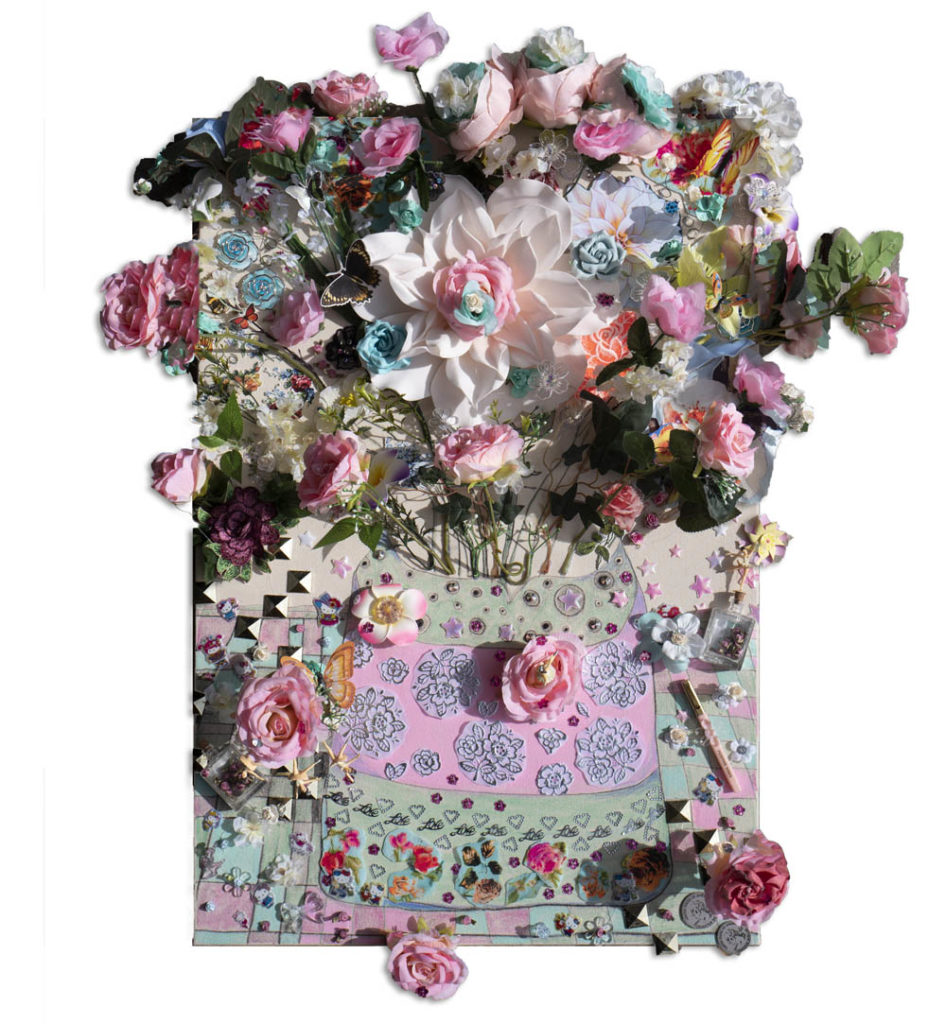
2.What are your favorite museums in the world? Why?
The Prado in Madrid. Mainly because the art is so weird in there. I mean, the painting “Family portrait” by Adriaen Thomasz Key, with all the heads jammed in? While I make vision boards now, I came to art as a painter, and it’s the tradition my work will always be grounded in.
The Britney Spears Museum. Ok, let me explain. I’m not actually a big Britney fan, and I wouldn’t be shy about it if I were. But I went to The Britney Spears Experience with a friend who is a massive fan.
It’s basically a selfie machine similar to the Museum of Ice Cream, where each room is set up for socially shareable photos. The presence of these unapologetic non “art experiences” in the market will force museums to remember they are something different than a hulking of Instagram experiences.
3.How important are social networks in your business? And which platform do you prefer and why.
I have self-defined my “business” of being an artist as: “Creating financially valuable culture that people feel connected to, understand, and celebrate”.
I am on Instagram to do this. Importantly, I’m also there because my friends are there. And because I can follow teddy bears from around the world (meet Fuku from Japan, and Yasah Bear from Russia). I guess I’m saying that my job is 1/3rd making work, 1/3rd making its market, and 1/3rd building a community around it.
And that community on Instagram is as much as my friends’ dogs’ Instagram accounts as it is Tate Exchange and my galleries, Annka Kultys Gallery and Gazelli Art House. I keep it blended to try to be as authentic as possible, though if I am going to cry, I do it off-platform… often at a museum.
It’s also that behind each of these art world accounts is a person. And I want to connect with that person not just as a representative of their institution but as someone who might also be a trail runner or totally obsessed with the new Taylor Swift album.
4.In particular, due to the coronavirus emergency, how have you changed your business on social networks?
On August 20th, I will open my first solo museum exhibition at the Monterey Museum of Art. Future News reframes conversations about truth online in terms of what I call “positive failures”.
For it I have changed the top search results to be my vision boards for “the next American president” and “cover of Artforum,” remaking the internet into a forward-thinking tool of possibility. The feminine and trivialized materials of the physical vision boards purposefully clash with the male-dominated worlds of artificial intelligence, programming, and political control they also operate within.
But right, what does it exactly mean to open an exhibition at a closed museum? My work is all about desire, about aspiration, about using hope and love to close the gap between where I am and where I want to be. We are going to put it out there into the universe that we are ready for and hopefully by Jan. 3, 2021, you will be able to visit IRL. But the exhibition, Future News, is all about truth, nuance, and our aspirational relationship to the promise of the internet, all tied up in the future of AI and news.
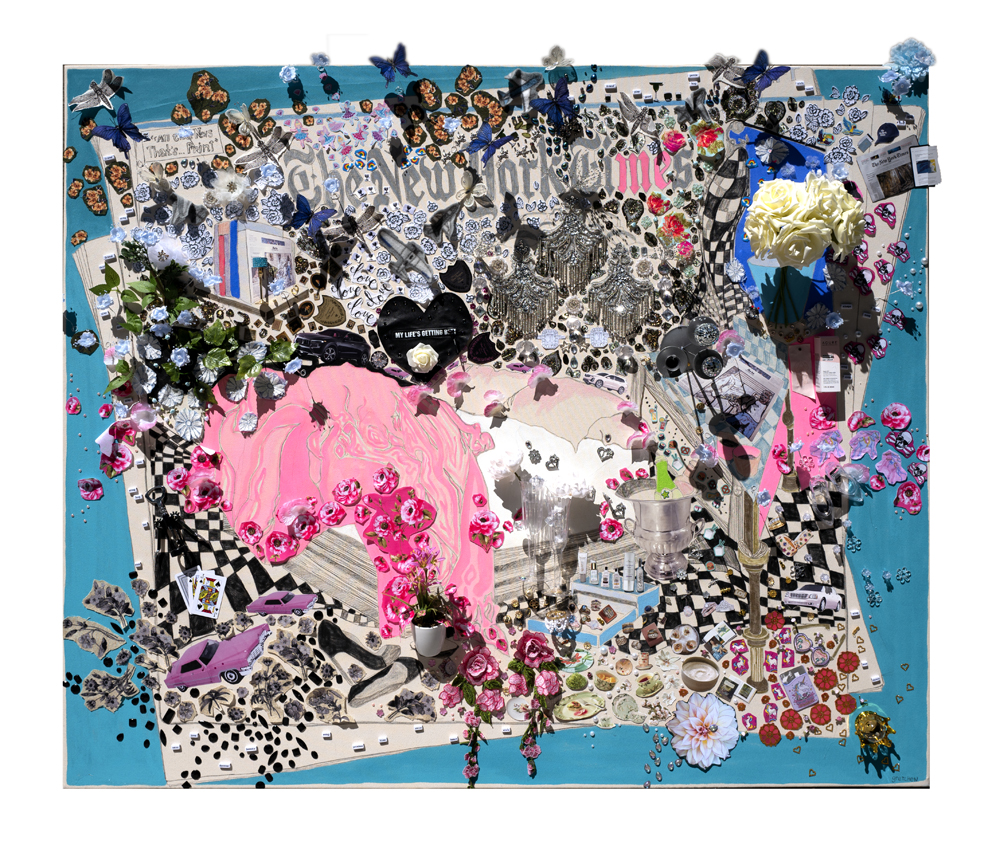
Working closely with the museum, we’ve found some ways to make people feel connected to the conversations the work incites. I’m particularly excited about having my friend Stephanie Quintana in conversation.
Similar to my work, her photography uses fantasy to imagine the future she wants, but her focus is on getting people of color to see themselves as fantastical. It’s really powerful work, and we need it more than ever right now.
5.To create greater engagement among museums, artists and professionals, do you have any advice for cultural projects such as #MuseumWeek?
Engagement, as a concept, has been changed by technology companies focused on clicks and likes. But pre-Silicon Valley, its origins were getting married and going to war. We have this illusion that we can measure it all now and that this data will help us justify public money in art, will woo donors, and I guess it probably does.
But it’s also totally a trap. Instead of counting, I think we should keep trying to treat engagement like the commitment it is to show up, pledge our love and our lives etc.
The history of computers is tied up in the idea of dream machines à la internet pioneer J.C.R. Licklider. This is what my exhibition tries to remind us. If we think of the internet as an artistic and creative medium we begin to realize that demanding accuracy from it may be misguided.
Interview by Fabio Pariante, journalist
MORE
Gretchen Andrew on social networks: Instagram
Gretchen Andrew (Los Angeles, 1988) is a search engine artist and Internet imperialist who programs her vision boards to manipulate the internet with art and desire. She trained in London with the artist Billy Childish from 2012-2017.
In 2018 the V&A Museum released her book Search Engine Art. Gretchen’s work has recently been featured in The Washington Post, Fortune Magazine, Monopol, The Los Angeles Times, Artnet News, Dazed, Hyperallergic, Artillery and The Financial Times.
Her first solo museum exhibition Future News will open at The Monterey Museum of Art on August 20, 2020 and includes a physical installation accompanied by a series of digital programs on artificial intelligence, journalism, digital culture and art.
